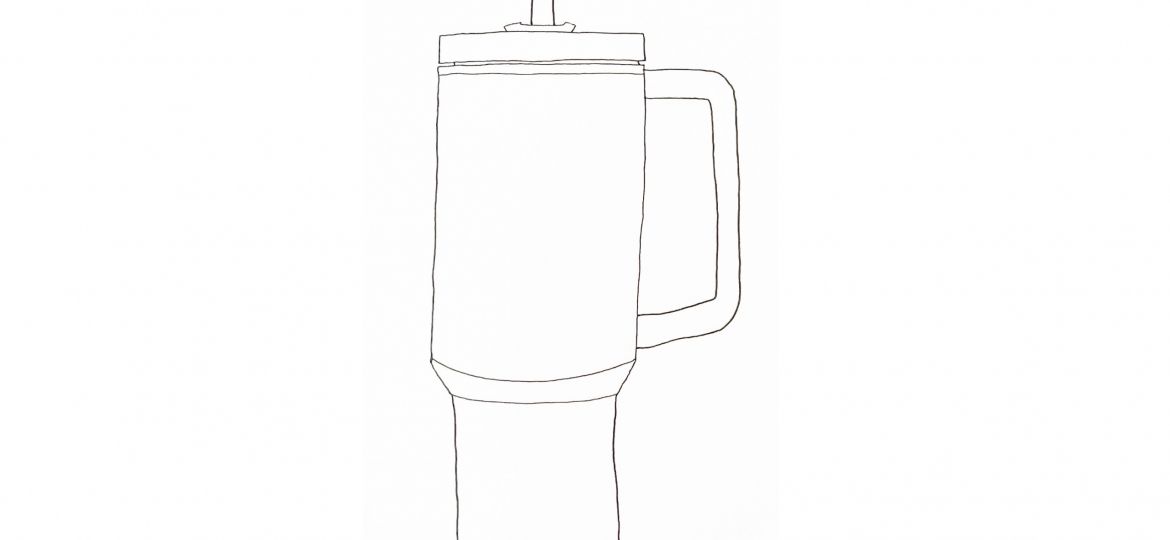
Illustration by Finley Hogan-Underdahl
I have stared into the abyss, and it was full of pastel metal.
If you’ve been paying attention to people’s water bottles over the past couple years, you may have noticed a name increasing in prevalence: that of the “Stanley cup.” Even if you’re blissfully unaware of this product, you’ve still probably heard the clank of one falling over. It’s an immensely popular product. The intentional scarcity of recent editions has caused stampedes at vendors, and according to social media influencers, there’s no better bottle out there. But why?
The Stanley company started out over a century ago making insulated thermoses marketed towards blue-collar workers. Their advertisements from the 20th century tend towards the misogynistic, with emphasis on rugged masculinity. Their target demographic didn’t shift until the 2020s. At this point, various bloggers had begun to recommend Stanley’s newer product: the Quencher. A few corporate partnerships later, this “cup” was all the rage among social media influencers, and was being marketed — primarily to women — as practical, fashionable, and sustainable. It is unclear to me why this gendered shift in marketing necessitated the addition of so many pastel shades.
But is the Stanley “cup” actually practical? Yes — for some people. On one hand, the built-in straw can be useful for drinking on the go, and they fit well in a car cup holder. If you rely on any other means of transportation — say, treading between classes, or taking public transit — the Quencher becomes far less practical; its tall, top-heavy shape makes it prone to slipping from a backpack and spilling one’s unsealable drink across the pavement. Not ideal, especially when these repeated falls have the potential to expose the bottle’s “cost-efficient” lead bottom. Given the Quencher’s exorbitant price, the whole product seems designed more for the suburban wealthy than the average student.
That brings me to the other two prongs of appeal: fashion and sustainability. Stanley sells these tumblers in a variety of hues, which people select with an eye towards which bottles will pair best with their outfits. I don’t personally understand the appeal of stressing over whether one’s water source is Instagram-able but to each their own. One can even show their individualism by customizing their mass-produced identical bottles with mass-produced identical accoutrements such as straw covers and backpacks. This all rather detracts credence from the claim of sustainability. Between buying a shade for every occasion, and the likelihood of the bottles ending up in a landfill as soon as the transient trend is no longer “in,” the popularity of Stanley cups does little more for the environment than the trendy single-use plastic brands of decades past. In the end, it’s not worth the $45.
Elias Hanson is from Chaska, Minn.
Their major is environmental studies.

